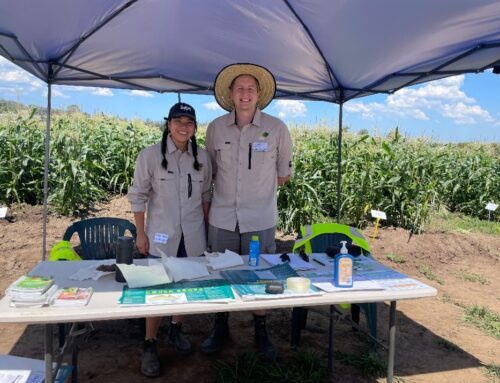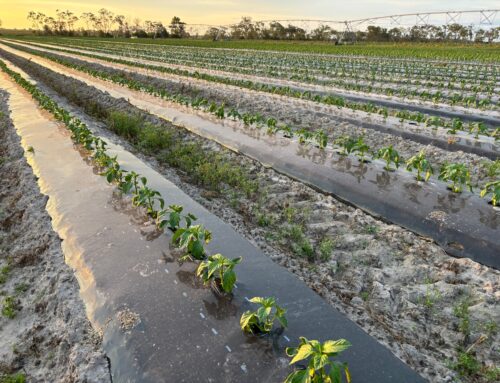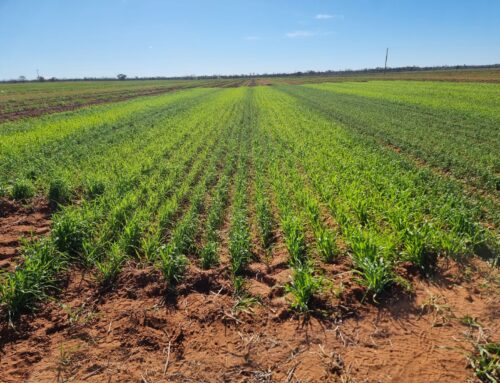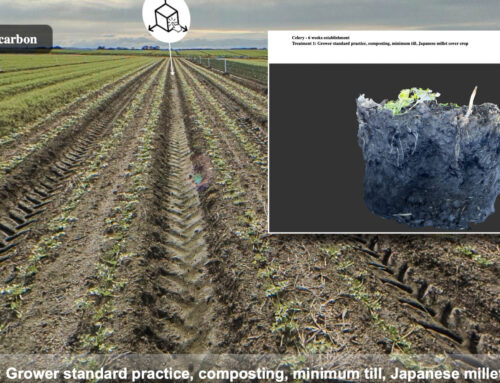Miriam Assaf, Horticulturist/Plant Pathologist Zadco for Quality Gro Pty. Ltd. (B.Sc.Agr(Hons)); Theresa Chapman, Consultant, RMCG (B.Ag. (Hons), B.Sci. (Ecology))
Most good crop management practices begin with the soil. Enhancing natural populations of beneficial soil organisms can aid in the growth and establishment of crops, as well as improve soil health and sustainability. By increasing the biodiversity of the soil and taking advantage of biological processes, we can reduce the need for some chemical inputs and enhance soil biological fertility which is an integral component of soil productivity. It is biological organisms that orchestrate the nutrient cycles within the soil profile to ensure long-term viability of your soil enabling it to be repetitively and productively cropped.
Although the application of agrochemicals is still an effective method to control plant pests and diseases, their use has fallen into disfavour due to environmental pollution and the detrimental effects on a variety of non-target organisms, not to mention the increasing demand for softer and safer products ultimately for animal and human wellbeing. Agrochemicals also have limitations such as their inability to effectively kill some pathogens, phytotoxicity, pathogen resistance, environmental concerns and the reduced availability of products. Using biological organisms to improve soil and plant health through natural modes of action as replacements or supplements to these limitations has increased in agricultural importance (Kunoh, 2002). Moreover, biologicals have no re-entry limits, no harvest withholding periods to worry about and no toxic residues.
WHERE TO BEGIN? AT THE ROOT OF IT
Soil is a very complex and dynamic medium. One gram of soil can contain billions of various and diverse species of microorganisms. In a monoculture, this diversity is restricted, and this is where the addition of certain biological products can play a significant role. The area to focus on is the rhizosphere. It is here where producers have the greatest influence on the potential of the crop.
Microbes which inhabit the plant Rhizosphere are important contributors to plant disease status and general soil disease ‘suppressive-ness’, reducing the effect of many soil-borne diseases (Whipps, 2001). Disease control by rhizosphere microbial communities has also been shown to extend to systemic and foliar diseases through the activation of the plant’s chemical or physical defence mechanisms (Kloepper et al., 1999). Rhizosphere and bulk soil microbial communities with high diversity are more likely to have a larger number of candidates with the ability to compete with pathogens (Shiomi et. Al, 1999) and provide the best biocontrol outcomes.
ROLES OF MICROORGANISMS IN THE SOIL
Microorganisms play a crucial and vital role in soil biological, chemical and physical processes. Their activity in soil have five major functions:
- Organic Matter (OM) decomposition and nutrient cycling: Soils with high OM support a greater number and a more diverse range of microorganisms (Bot and Benites, 2005).
- Interactions with plants effecting both health and production: Formation of symbiotic relationships e.g. legumes with rhizobium bacteria to fix atmospheric nitrogen and mycorrhizal fungi with plant roots which act as an extended root system to absorb water, nitrogen, phosphorus and other nutrients from soil.
- Improve physical structure of soil: Soil structure and microorganisms are interdependent and help increase aeration, drainage, cation exchange capacity (CEC), improved soil aggregation (via mucus produced by microorganisms and network of mycelia by e.g. Mycorrhizal fungi) and can help move the pH toward neutral, if the soil is acidic or alkaline.
- Biological degradation: The cycling of OM by soil organisms releases other nutrients into the soil and air, some of which is readily available to the plant e.g. nitrates, phosphates and sulphates.
- Disease management: Help improve biological control of soil-borne pathogens through differing modes of action: competition, antagonism or parasitism; inhibition factors e.g. secretion of antibiotics and/or plant-induced resistance.
Micro-organisms are necessary to maintain the dynamic and complex soil cycles being carried out at a more efficient rate for providing a better soil environment rich in nutrients, organic matter, soil stability, fertility and structure, and general soil health for continuous and sustainable production.
HOW TO GET THE MOST OUT OF BIOLOGICAL PRODUCTS
Because biological products are living organisms, they need to be treated as such. They have certain prerequisites to ensure optimum performance in the environment. Favourable conditions of the species in the product and product protocol of use must be studied to ensure you get the best out of what you pay for. E.g. avoid sterilisers, bactericides, fungicides, and other strong chemicals when using biologicals.
SHOPPING CHECKLIST FOR BIOLOGICAL PRODUCTS
✓ Be sure it contains biological organisms, NOT extracts of living organisms – While extracts can provide protection for a short time, living organisms are self-maintaining and can even grow in strength under the right conditions.
✓ Be sure the label has a guaranteed analysis – A count of the organisms so you know what you are getting.
✓ Use fresh products – The shelf life of biologicals can vary greatly so look for those that last 18 months to two years, their stability is greater.
✓ Avoid using products that require refrigeration – It is unclear if they got warm and degraded before you bought them.
✓ Avoid products with more than 5 living organisms – More organisms mean fewer of each and possibly a weak product.
✓ If label recommends ongoing applications – Ongoing applications of biological products are necessary, not just to counter pathogen numbers and detrimental agricultural practices but to enable the expression of their many other specific and beneficial roles in your crop.
As an agricultural company whose focus is on innovation through intensive R&D, and whose motto is ‘biotechnologies for safer agriculture’, our goals are in line with sustainable initiatives. We have over 40 years of experience using commercial biological control agents worldwide. To grow smarter and greener, we have seen the benefit of using what nature has given us, to do the hard work for us.
Mr. Graham Rose, a vegetable farmer in Myalup W.A. is one example of the many farmers today utilising biologicals in their operation.
“I started working with Zadco in 2017. The agronomic advice along with the biological products recommended on all of our vegetable production have been a huge success. Notably this has enabled me to spray less fungicides and insecticides during entire crop growing phases. Along with enhanced soil health I am starting to use less fertilizer whilst keeping quality and yield,” he said.
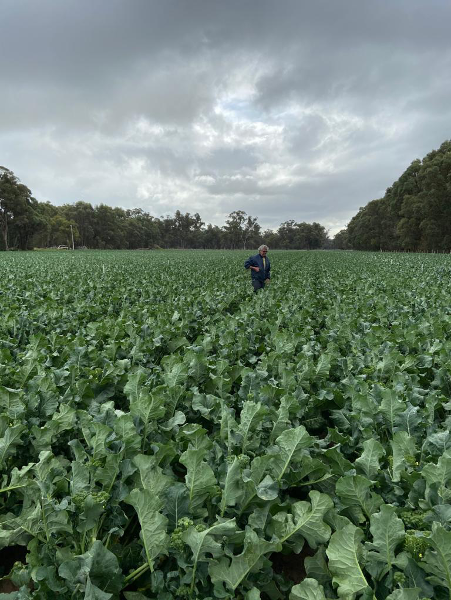
Figure 1: Mr. Graham Rose in his broccolini paddock in Myalup W.A.
Soil Wealth ICP Biological Crop Products Database
Zadco is one of many companies offering an increasingly diverse range of biological crop products. To help growers begin to make sense of these inputs, SWICP has published an evolving database of biological crop products, laid out side by side with basic, comparable information. You can access it here.
References and further reading
Bot, A. and Benites, J. (2005) The importance of soil organic matter – key to drought-resistant soil and sustained food production. Food and Agricultural Organisation of the United Nations. FAO Soils Bulletin 80.
Gupta, V.V.S.R.; Neate, S.M., Leonard, S. (n.d.). Life in the Soil – the relationship between agriculture and soil organimsms. Cooperative Research Centre for Soil
& Land Management www.asssi.asn.au/downloads/ educational/books_activities/secondary/20_life-inthe- soil.pdf, accessed 28/4/10.
Kloepper, J.W.; Rodríguez-Kábana, R.; Zehnder, G.W.; Murphy, J.; Sikora, E. and Fernández, C. (1999) Plant root-bacterial interactions in biological control of soilborne diseases and potential extension to systemic and foliar diseases. Australasian Plant Pathology 28:27-33.
Kunoh, H., (2002). Endophytic actinomycetes: attractive biocontrol agents. J Gen Plant Pathol 68:249-252
Linderman, R.G. (1988) Mycorrhizal interactions with rhizosphere microflora: The mycorrhizosphere effect. Phytopathol. 78, 366-371.
Shiomi, Y.; Nishiyama, M.; Onizuka, T. and Mmarumoto, T. (1999) Comparison of bacterial community
structures in the rhizosplane of tomato plants grown
in soils suppressive and conducive towards bacterial
wilt. Appl. Environ. Biol. 65: 3996-4001.
Torsvik, V.; Ovreas, L. and Thingstad, T.F. 2002. Prokaryotic diversity: Magnitude, dynamics, and controlling factors. Science 296:1064–1066.
Whipps, J.M. (2001) Microbial interactions and biocontrol in the rhizosphere. Journal of Experimental Botany 52(roots special issue): 487-511.


